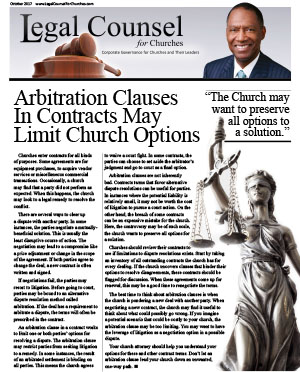Succession planning is a recognized necessity for most organizations. It becomes even more important where the positions in an organization are critical to its survival. In a church, the Pastor and key leaders are vital. Churches should have a carefully crafted succession plan for the inevitable transition in leadership.
Often when we talk about succession planning, we talk about the key executive officer. In the case of a church, the key officer is the Pastor. Succession planning for a church should begin with the Pastor’s position. However, the need for planning should also extend to the other crucial leadership roles.
When a church does not have a succession plan, it is depending on making the right decisions when the departure of the pastor is imminent. This approach is a reactionary one. Succession planning can be triggered by the announced resignation or retirement of the pastor. The church should have some procedures in place that identifies who is to serve on a search committee or who picks up the former Pastor’s duties. Often, the midst of a transition is filled with anxiety and a sense of urgency to get back to normal. A plan helps avoid the mistakes that can be made in a hasty situation.
Succession planning involves more than just hiring a replacement for the pastor. Preparation for succession is about ensuring the legacy and direction of the church is secure. This involves two major focuses:
1) Knowing thyself and 2) Making plans for various kinds of successions. Each area should be contemplated carefully.
Know Thyself
Before a church can begin to search for a new leader, it must have a sense of its own identity. Church ministries are unique. Some churches are proficient at marshalling resources for community outreach. Some churches deliver their message via electronic media. The demographics and location of the church may play a role in its ministry makeup. A leader entering any church must understand the church’s culture. But first, the church must understand its own character.
Succession planning at this phase begins with describing what kind of church you have. Church leaders should seek opinions from the community and from within. It is important here to have a frank perspective on how the church sees itself and how others view the church. This exercise can be accomplished with surveys, interviews, focus groups and social media outlets.
After a church gets a firm outlook of itself, it should decide if it likes what it sees. A new church leader will need to know if the church wants to grow in a different direction or maintain the current course. This is critical. If the church wants to evolve its ministry, a new leader should reflect the vision for what the church sees for itself. Choosing a leader that fits today’s church and expect the new pastor to do something different might be inconsistent to the traits of both.
Succession Types
All events leading to a pastor succession event are not the same. In some instances, the pastor may announce his retirement well in advance of the actual departure. Unfortunately, a pastor’s departure could be unexpected and tragic. The church should be prepared for both kinds of succession events.
For an emergency succession, the church should have a prescribed set of procedures to follow. Who preaches next Sunday? Who handles the daily administrative functions? Who will address stakeholders and the congregation? These are just a few of the questions that should be answered during the early days of an emergency succession.
The succession plan should contemplate interim leadership, a communications plan and legal obligations to the former pastor or his estate. The succession plan will not likely be foolproof. Some decisions will need to be made on the spur of the moment. The plan gives the church leaders a script from which to work by identifying the important issues.

